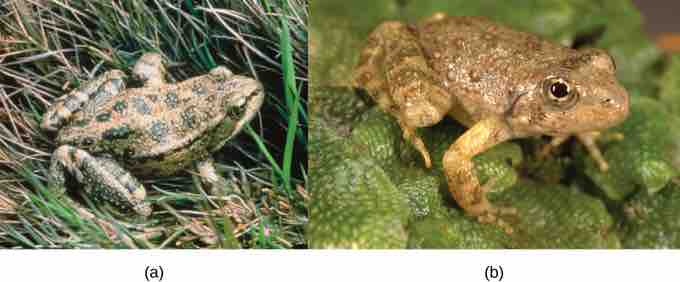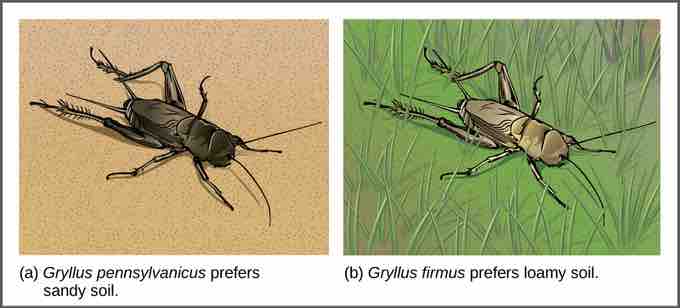Reproductive Isolation
Given enough time, the genetic and phenotypic divergence between populations will affect characters that influence reproduction: if individuals of the two populations were to be brought together, mating would be improbable, but if mating did occur, offspring would be non-viable or infertile. Many types of diverging characters may affect reproductive isolation, the ability to interbreed, of the two populations. Reproductive isolation is a collection of mechanisms, behaviors, and physiological processes that prevent the members of two different species that cross or mate from producing offspring, or which ensure that any offspring that may be produced is not fertile.
Scientists classify reproductive isolation in two groups: prezygotic barriers and postzygotic barriers. Recall that a zygote is a fertilized egg: the first cell of the development of an organism that reproduces sexually. Therefore, a prezygotic barrier is a mechanism that blocks reproduction from taking place; this includes barriers that prevent fertilization when organisms attempt reproduction. A postzygotic barrier occurs after zygote formation; this includes organisms that don't survive the embryonic stage and those that are born sterile.
Some types of prezygotic barriers prevent reproduction entirely. Many organisms only reproduce at certain times of the year, often just annually. Differences in breeding schedules, called temporal isolation, can act as a form of reproductive isolation. For example, two species of frogs inhabit the same area, but one reproduces from January to March, whereas the other reproduces from March to May .

Temporal isolation
These two related frog species exhibit temporal reproductive isolation. (a) Rana aurora breeds earlier in the year than (b) Rana boylii.
In some cases, populations of a species move to a new habitat and take up residence in a place that no longer overlaps with other populations of the same species; this is called habitat isolation. Reproduction with the parent species ceases and a new group exists that is now reproductively and genetically independent. For example, a cricket population that was divided after a flood could no longer interact with each other. Over time, the forces of natural selection, mutation, and genetic drift will likely result in the divergence of the two groups .

Habitat isolation
Speciation can occur when two populations occupy different habitats. The habitats need not be far apart. The cricket (a) Gryllus pennsylvanicus prefers sandy soil, while the cricket (b) Gryllus firmus prefers loamy soil. The two species can live in close proximity, but because of their different soil preferences, they became genetically isolated.
Behavioral isolation occurs when the presence or absence of a specific behavior prevents reproduction from taking place. For example, male fireflies use specific light patterns to attract females. Various species display their lights differently; if a male of one species tried to attract the female of another, she would not recognize the light pattern and would not mate with the male.
Other prezygotic barriers work when differences in their gamete cells prevent fertilization from taking place; this is called a gametic barrier. Similarly, in some cases, closely-related organisms try to mate, but their reproductive structures simply do not fit together. For example, damselfly males of different species have differently-shaped reproductive organs. If one species tries to mate with the female of another, their body parts simply do not fit together. .

Differences in reproductive structures in male damselflies
The shape of the male reproductive organ varies among male damselfly species and is only compatible with the female of that species. Reproductive organ incompatibility keeps the species reproductively isolated.
In plants, certain structures aimed to attract one type of pollinator simultaneously prevent a different pollinator from accessing the pollen. The tunnel through which an animal must access nectar can vary in length and diameter, which prevents the plant from being cross-pollinated with a different species .

Reproductive isolation in plants
Some flowers have evolved to attract certain pollinators. The (a) wide foxglove flower is adapted for pollination by bees, while the (b) long, tube-shaped trumpet creeper flower is adapted for pollination by humming birds.
When fertilization takes place and a zygote forms, postzygotic barriers can prevent reproduction. Hybrid individuals in many cases cannot form normally in the womb and simply do not survive past the embryonic stages; this is called hybrid inviability. In another postzygotic situation, reproduction leads to the birth and growth of a hybrid that is sterile and unable to reproduce offspring of their own; this is called hybrid sterility.